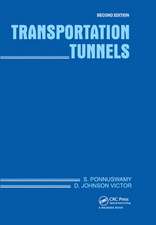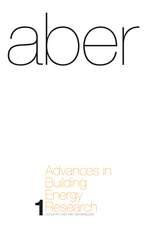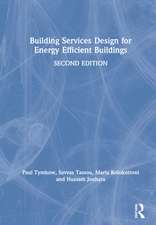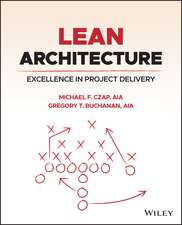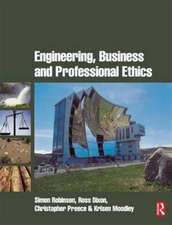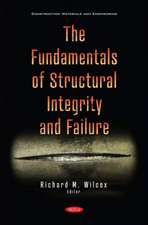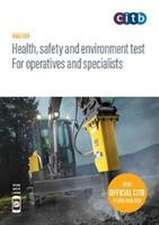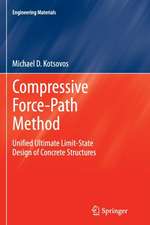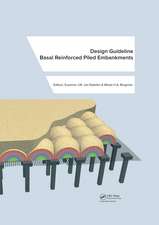Self-Consolidating Concrete: Applying what we know
Autor Joseph Daczkoen Limba Engleză Hardback – 6 mar 2012
—Peter Billberg, Swedish Cement and Concrete Research Institute (CBI)
"Quite comprehensive and with a narrative style at the practitioner level."
—Lloyd Keller, Director of R&D and Quality Assurance, EllisDon, Canada
Self-consolidating concrete (SCC) is an innovative material used successfully throughout the world. It is a highly flowable, non-segregating concrete that can spread into place, fill the formwork, and encapsulate the reinforcement without any mechanical consolidation, improving the overall efficiency of a concrete construction project. SCC mixtures are highly fluid, yet their flowing properties can be adapted for a range of applications and allow practitioners to select and determine levels of filling ability, passing ability, and stability.
Self-Consolidating Concrete: Applying What We Know discusses all aspects of SCC, including:
- Benefits and limitations
- Raw material components
- Mixture proportions
- Production and quality control
- Placement and curing
This book bridges the gap between research and practice. It links science with practical application, describing a number of projects and types of applications where SCC has been used successfully. It will be useful for new practitioners as well as for those already using SCC.
| Toate formatele și edițiile | Preț | Express |
|---|---|---|
| Paperback (1) | 435.00 lei 6-8 săpt. | |
| CRC Press – 12 dec 2019 | 435.00 lei 6-8 săpt. | |
| Hardback (1) | 786.38 lei 6-8 săpt. | |
| CRC Press – 6 mar 2012 | 786.38 lei 6-8 săpt. |
Preț: 786.38 lei
Preț vechi: 959.00 lei
-18% Nou
Puncte Express: 1180
Preț estimativ în valută:
150.49€ • 163.41$ • 126.41£
150.49€ • 163.41$ • 126.41£
Carte tipărită la comandă
Livrare economică 22 aprilie-06 mai
Preluare comenzi: 021 569.72.76
Specificații
ISBN-13: 9780415590648
ISBN-10: 0415590647
Pagini: 304
Ilustrații: 52 Line drawings, black and white; 76 Halftones, black and white; 71 Tables, black and white
Dimensiuni: 156 x 234 x 25 mm
Greutate: 0.57 kg
Ediția:1
Editura: CRC Press
Colecția CRC Press
Locul publicării:Boca Raton, United States
ISBN-10: 0415590647
Pagini: 304
Ilustrații: 52 Line drawings, black and white; 76 Halftones, black and white; 71 Tables, black and white
Dimensiuni: 156 x 234 x 25 mm
Greutate: 0.57 kg
Ediția:1
Editura: CRC Press
Colecția CRC Press
Locul publicării:Boca Raton, United States
Public țintă
Postgraduate, Professional, and Professional Practice & DevelopmentCuprins
Introduction, History and Acceptance of SCC. Benefits and Limitations of SCC. Fresh Properties and Test Methods. Hardened Properties of SCC. Powders and Aggregates. Chemical Admixtures. Considerations Prior to Mixture Proportioning. Proportioning SCC Mixtures. Mixture Qualification. Concrete Batching and Mixing. Quality Control of SCC Materials and Mixtures. Transport, Placement, Finishing and Curing. Troubleshooting SCC Performance. Implementation and Training. Applications of SCC. Index.
Notă biografică
Joseph A. Daczko is a concrete technologist with the admixture systems business of BASF. He was the first chairman of the American Concrete Institute's committee on Self-Consolidating Concrete and was presented with ACI's Delmar Bloem Award for leadership of this committee.
Recenzii
A very interesting and useful book for all the different practitioners in the concrete industry. Each necessary step is thoroughly dealt with and explained in a nice and pedagogic way.
—Peter Billberg, Swedish Cement and Concrete Research Institute (CBI)
Quite comprehensive and with a narrative style at the practitioner level.
—Lloyd Keller, Director of R&D and Quality Assurance, EllisDon, Canada
—Peter Billberg, Swedish Cement and Concrete Research Institute (CBI)
Quite comprehensive and with a narrative style at the practitioner level.
—Lloyd Keller, Director of R&D and Quality Assurance, EllisDon, Canada
Descriere
Self-consolidating, or self-compacting, concrete (SCC) uses mixture proportioning techniques and admixture technology to create a concrete mixture with increased fluidity, thereby avoiding the need for mechanical consolidation/vibration. SCC mixtures with various performance levels can be produced in the laboratory, but the know-how is sometimes lacking to do this on site. This book presents a foundation for consistently producing and applying SCC in a daily production environment. It links science with practical application and will be useful for both new practitioners and those already using SCC. The author uses stories and case studies throughout as examples of specific types of applications.

